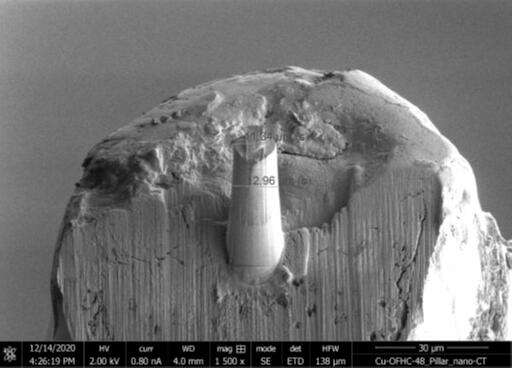Nanotomography (nCT)
Nanotomography
Nanotomography, much like its related modalities tomography and microtomography, uses x-rays to create cross-sections from a 3D-object that later can be used to recreate a virtual model without destroying the original model, applying Nondestructive testing. The term nano is used to indicate that the pixel sizes of the cross-sections are in the nanometer range
Nano-CT beamlines have been built at 3rd generation synchrotron radiation facilities, including the Advanced Photon Source of Argonne National Laboratory, SPring-8, and ESRF from early 2000s. They have been applied to wide variety of three-dimensional visualization studies, such as those of comet samples returned by the Startdust mission, mechanical degradation in lithium-ion batteries, and neuron deformation in schizophrenic brains.Although a lot of research is done to create nano-CT scanners, currently there are only a few available commercially. The SkyScan-2011 has a range of about 150 to 250 nanometers per pixel with a resolution of 400 nm and a field of view (FOV) of 200 micrometers. The Xradia nanoXCT has a spatial resolution of better than 50 nm and a FOV of 16 micrometers.At the Ghent University, the UGCT team developed a nano-CT scanner based on commercially available components. The UGCT facility is an open nano-CT facility giving access to scientists from universities, institutes and industry.
Wikipedia contributors. "Nanotomography." Wikipedia, The Free Encyclopedia. Wikipedia, The Free Encyclopedia, Aug. 22, 2023.
Other modalities related to Nanotomography in Helmholtz Imaging CONNECT:
Hard X-ray full-field nanotomography is an ideal technique to study the inner structure of materials non-destructively at high spatial resolution, covering research areas suchas material science, biology and medical research.
(from https://bib-pubdb1.desy.de/record/471334)
